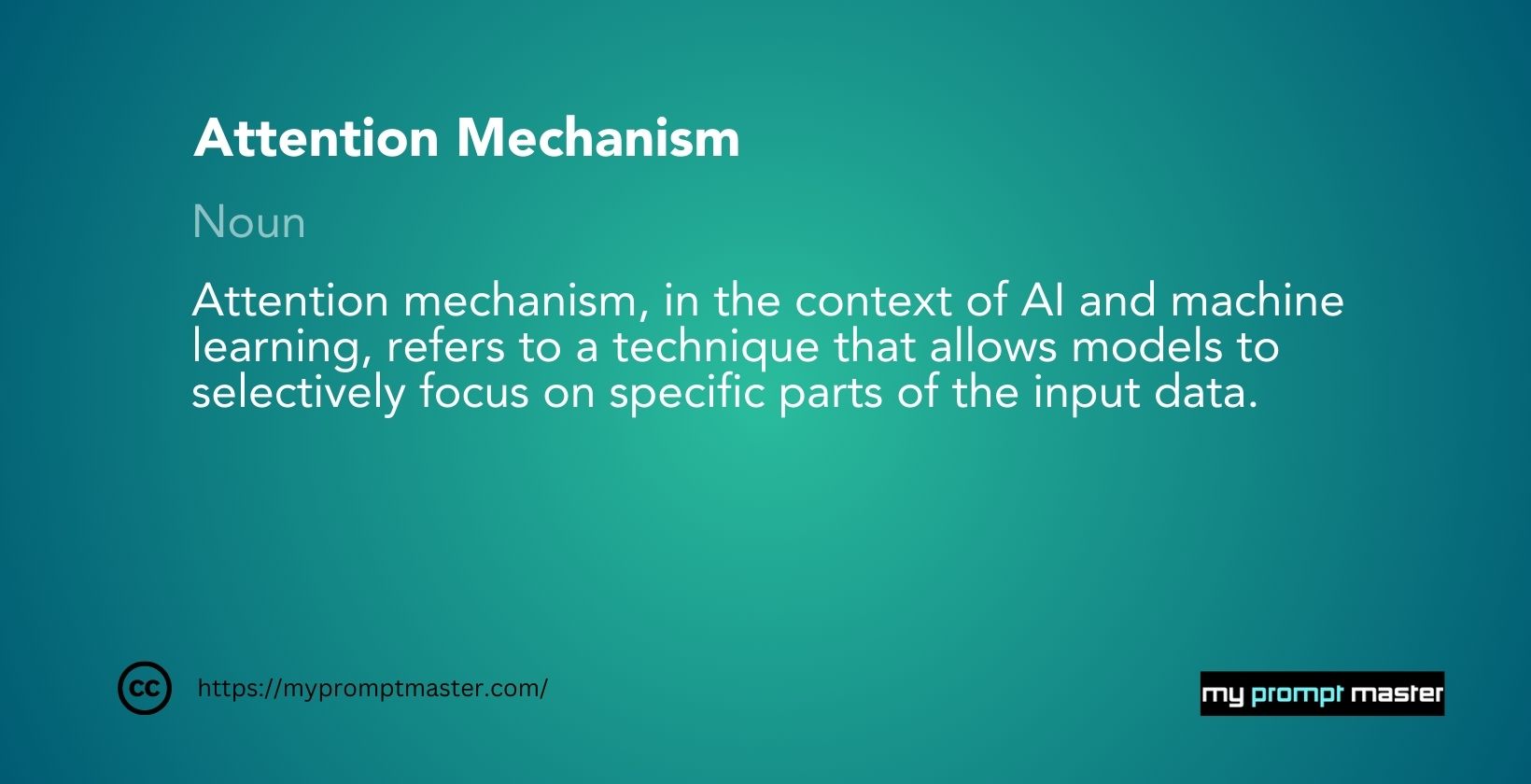Attention mechanism, in the context of AI and machine learning, refers to a technique that allows models to selectively focus on specific parts of the input data.

It enables the model to allocate its computational resources effectively, emphasizing the most relevant information for the task at hand. Inspired by the human attention system, attention mechanism has become a key component in many state-of-the-art AI models.
Overview of Attention Mechanism
In the field of artificial intelligence and machine learning, attention mechanism has emerged as a powerful concept that has revolutionized various applications, especially in natural language processing and computer vision. It allows models to focus on specific parts of input data while performing complex tasks, mimicking the way human attention works.
How Attention Mechanism Works
At a high level, attention mechanism works by assigning weights to different parts of the input data, indicating their relative importance. These weights are computed based on the compatibility between the target and the input elements. The higher the compatibility, the higher the weight assigned to that particular input element. This process allows the model to selectively attend to the most relevant information.
Types of Attention Mechanism
Self-Attention Mechanism
Self-attention mechanism, also known as intra-attention mechanism, enables a model to attend to different positions within its own input sequence. It considers the relationships between different elements of the input sequence and assigns weights accordingly. Self-attention has gained significant popularity in natural language processing tasks, such as machine translation and text summarization.
Global Attention Mechanism
Global attention mechanism, also referred to as context-based attention, considers the entire input sequence while attending to specific parts. It computes the attention weights by comparing each element of the input sequence with a context vector. Global attention has been successfully applied in tasks like sentiment analysis and question answering.
Local Attention Mechanism
Local attention mechanism strikes a balance between self-attention and global attention. It focuses on a local neighborhood of the input sequence, attending to a subset of elements instead of the entire sequence. This approach reduces computational complexity while still capturing the relevant information. Local attention is often utilized in tasks where aligning specific parts of the input sequence is important, such as speech recognition.
Attention Mechanism in Natural Language Processing
Attention mechanism has significantly improved the performance of various natural language processing tasks. In machine translation, for example, attention allows the model to align source and target words effectively, improving translation accuracy. Similarly, in text summarization, attention helps the model to identify important sentences or phrases that contribute to the summary. Attention has become a vital tool for processing sequential data in NLP.
Attention Mechanism in Computer Vision
Attention mechanism has also found applications in the field of computer vision. In tasks like image captioning, attention enables the model to focus on relevant regions of the image while generating descriptive captions. By attending to different parts of the image, the model can accurately describe the contents in a coherent and meaningful manner. Attention has proven to be instrumental in enhancing the performance of visual recognition tasks.
Benefits and Advantages of Attention Mechanism
The incorporation of attention mechanism in AI models brings several benefits and advantages. Some of them include:
- Enhanced performance: Attention mechanism improves the accuracy and efficiency of models by focusing on the most informative parts of the input data.
- Interpretability: Attention weights provide insights into the model’s decision-making process, allowing users to understand the reasoning behind the predictions.
- Flexibility: Attention mechanism can be integrated into various models and architectures, making it a versatile tool for different AI applications.
- Adaptability: Attention can adaptively allocate resources to different parts of the input sequence, making the models more robust to variations in the data.
Limitations and Challenges of Attention Mechanism
While attention mechanism offers numerous advantages, it also presents certain limitations and challenges. Some of them include:
- Computational overhead: Attention mechanisms can be computationally expensive, especially when dealing with large-scale datasets or complex models.
- Dependency on input order: Sequential attention mechanisms heavily depend on the order of input elements, making them sensitive to changes in the input sequence.
- Interpretability challenges: Understanding the exact reasoning behind the attention weights can be challenging, particularly in deep learning models with multiple layers.
- Generalization issues: Attention mechanisms might struggle to generalize well to unseen data or scenarios that differ significantly from the training data.
Future of Attention Mechanism in AI
As attention mechanism continues to prove its effectiveness in various AI applications, its future appears promising. Researchers are actively exploring ways to improve attention models by addressing their limitations and developing more efficient architectures. Attention is likely to play a pivotal role in advancing the capabilities of AI systems, enabling them to handle complex tasks with greater accuracy and interpretability.
Conclusion
In conclusion, attention mechanism has become a fundamental concept in AI and machine learning. By allowing models to selectively focus on relevant information, attention has greatly enhanced the performance of various tasks, including natural language processing and computer vision. While attention mechanisms have their limitations, ongoing research and advancements in the field are expected to overcome these challenges. As attention continues to evolve, it will play a crucial role in shaping the future of AI.
You May Also Like:
You can visit to check the glossary page of AI, ML, language model, LLM-related terms.


